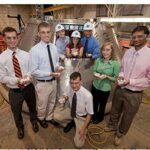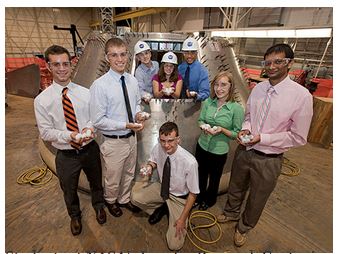Education
2010 – Workforce and Education Metrics – Snapshot
Measures of space-related human capital are useful to policymakers, industry leaders, and independent analysts because they enable exploration of those aspects of space activity with the most direct impact on people’s everyday lives: jobs, wages, and education.
2010 – Space Industry Demographics – Snapshot


In the United States, NASA continues to be a significant source of demand for new space professionals. Over the past five years, NASA has hired more than . . .
2010 – U.S. Education Trends – Snapshot
Considered together, recent NASA and U.S. aerospace company hiring statistics indicate that there is a combined demand for thousands of new S&E workers each year in the United States, a growing proportion of whom are aged 35 or less. These new hires will most likely need at least a bachelor’s degree, and many will require either a master’s or doctoral degree.
2010 – Degrees Awarded – Snapshot
While mechanisms such as the PISA test reveal a cross-national focus on primary and secondary STEM competency, a more direct measure of the potential international space workforce is offered through a comparative analysis of STEM university graduates by country.
2009 – Global Space Workforce and Education – Snapshot
Nations around the world recognize the potential of space activity to create high-paying jobs, enable new industries and technologies, increase national competitiveness, and add value to the economy. Building for a future that envisions their increasing participation in space, countries are responding with notable human capital investments that combine traditional models of space education with emerging new approaches.
2009 – PISA Test Snapshot
An examination of PISA test scores among 14 countries active in space offers a more focused view of relative math and science literacy, which has implications for the numbers of STEM graduates each country produces and in turn the supply of STEM-skilled workers available for space-related professions. Exhibit 4bb shows national PISA test scores from 2009 for major space countries in mathematics and science.
2009 – Top-level Trends – Snapshot
As nations around the world increase investment in both space activity and space human capital infrastructure, traditional models of space education and workforce development are increasingly being supplemented by newer approaches. These approaches emphasize the potential for international space education cooperation and focus on engaging student interest in space at an early age.
2008 – Demographics
Women constituted a majority of students who received post-secondary degrees. In 2006, some 58% of all bachelor’s degrees were awarded to women, up from 51% in 1986. In degree fields critical to the space industry, however, women are still woefully underrepresented.
2008 – Degrees Awarded
Note: This exhibit is from The Space Report 2009. Please refer to this year’s exhibits for the most current data as numbers may have been revised since this edition was published.Between 1986 and 2006, bachelor’s degrees awarded in these three space-critical fields fell by 8%, dropping from 141… Thank you for visiting The Space Report!…
2008 – Post-secondary STEM Education
New manpower, especially the recruitment of talented college graduates with degrees in such fields as astronomy; aeronautical and astronautical engineering; atmospheric, Earth, and space sciences; and mathematics, will be key to ensuring the health and vitality of the country’s space industry. What follows is an overview of a few major trends in postsecondary science and engineering education.